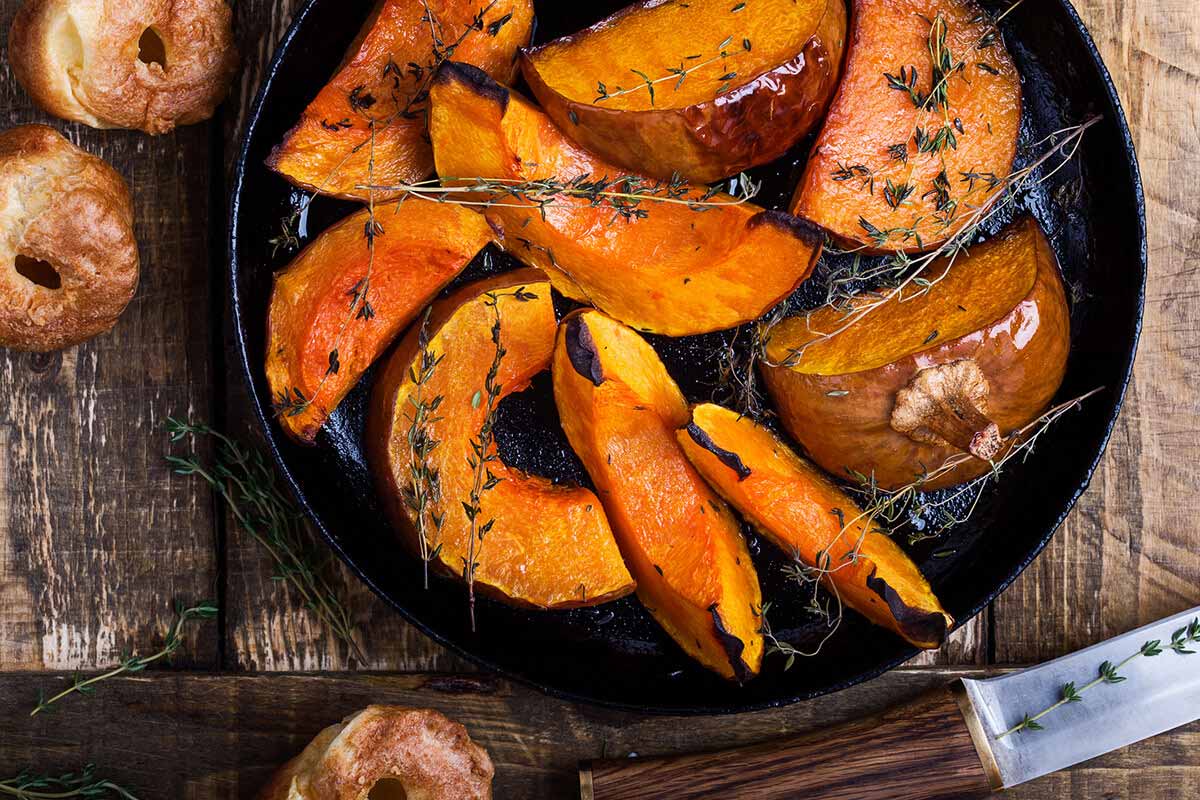8 seasonal superfoods that may boost your health

Fruits and vegetables can be delicious and nutritious no matter what the temperature is outside. But when the weather gets cooler, certain comforting superfoods come into season that can offer a nutritional boost.
When it comes to how much of these foods you should eat, there are general guidelines you may want to follow. The Centers for Disease Control and Prevention recommends that adults eat 1½ to 2 cups of fruit and 2 to 3 cups of vegetables each day.1
“Try to eat a variety of different foods to get the benefits they each offer,” says Steph Magill, M.S., R.D., a registered dietitian and founder of Soccer Mom Nutrition.
Ready to start enjoying the tastes of the season? Tap into this list of 8 seasonal superfoods that nutritionists recommend.
1. Pumpkin
This orange fruit is rich in antioxidants like vitamin A.2 Antioxidants may help prevent cellular damage in the body, as well as certain diseases.3
What’s more, eating vitamin A-rich foods may also help support eye health, explains Mary Sabat, M.S., R.D.N., a nutritionist in Alpharetta, Georgia.2
Serving size: ½ cup pumpkin4
Ways to enjoy:
- Roast it with olive oil and spices for a tasty side dish.
- Create a creamy soup. Magill suggests, roasting pumpkin, then blending it with coconut milk and a dash of curry.
- Bake pumpkin seeds with salt and pepper or other spices, like garlic powder or paprika, for a crispy snack.
2. Sweet potato
This healthier alternative to a traditional potato is packed with potassium and fiber.5 The fiber in sweet potatoes, as with most fruits and vegetables, may help lower cholesterol and blood sugar.6 And potassium can help regulate blood pressure.7
Serving size: ½ large sweet potato4
Ways to enjoy:
- Cut them up and bake them as fries.
- Steam and mash them with garlic and herbs.
- Add them to hearty stews, suggests Sabat.
3. Kale
This leafy green has so much goodness: antioxidants like vitamins A and C, vitamin K, folate, fiber and more. “It’s a nutritional powerhouse,” says Sabat. The nutrients found in kale may help reduce inflammation and protect against heart disease and even certain cancers.8
Serving size: 1 cup raw kale4
Ways to enjoy:
- Sauté kale with garlic and olive oil for a simple side dish.
- Toss with lemon juice and salt for an easy salad.
- Blend kale with a banana and almond milk for a green smoothie, suggests Magill.
4. Cranberries
Cranberries are high in antioxidants like vitamins C and E, notes Magill.9
Serving size: ½ cup cranberries4
Ways to enjoy:
- Add them to oatmeal or salads, suggests Sabat.
- Make cranberry sauce by cooking fresh cranberries with orange juice and honey.
- Simmer cranberries with apple cider and spices for a warming drink, suggests Magill.
5. Brussels sprouts
Brussels sprouts are a cruciferous vegetable rich in vitamin K, vitamin C and fiber.10 “They promote healthy bones and reduce the risk of chronic disease,” Sabat says. Along with other cruciferous vegetables, they may lower the risk of heart disease and stroke.11
Serving size: ½ cup brussels sprouts4
Ways to enjoy:
- Roast them with balsamic glaze. Or, drizzle them with maple syrup or mustard for a sweeter or spicier treat.
- As a savory twist, pan-fry brussels sprout halves and add some cooked, crumbled turkey bacon.
- Shred brussels sprouts and toss with nuts and dressing for a crunchy salad.
6. Apples
This crunchy colorful fruit contains antioxidants like vitamin C and fiber. All these nutrients may help lower cholesterol, explains Magill. Eating apples may also lower your risk of developing type 2 diabetes.12
Serving size: 1 medium-size apple4
Ways to enjoy:
- Bake them with cinnamon and honey for a warm dessert.
- Cut them up and add to salads, oatmeal or smoothies for some crunch and sweetness, suggests Magill.
- Slice one up and dip the pieces in your favorite natural nut butter.
7. Butternut squash
With vitamins A and C, fiber and potassium, butternut squash may help support eye health and heart function, notes Sabat.13
Serving size: ½ cup butternut squash4
Ways to enjoy:
- Puree and serve it as soup.
- Steam butternut squash, puree it and add it to pasta sauce for extra creaminess.
- Roast it with maple syrup and cinnamon for a tasty side dish.
8. Pomegranates
The deep pigment of this fruit is an outward sign of its antioxidants that fight off inflammation and aging.1 "Pomegranates [may] boost heart health and may reduce inflammation,” says Sabat. If you’re looking for a good source of fiber, pomegranates also fit that bill, adds Magill.14
Serving size: ½ cup of pomegranate seeds4
Ways to enjoy:
- Nibble on the seeds for a tart snack.
- Sprinkle them on salads or your morning yogurt for some crunch.
- Use the seeds as a colorful garnish for desserts, suggests Sabat.
There are plenty of ways to incorporate seasonal fruits and vegetables into your diet. Trying a variety of new seasonal foods can help diversify your plate and benefit your health.

